40 лет Санкт-Петербургской типологической школе - [30]
The significant role of iconicity in RL-formatives is noted i. a. by Paul [1959: 119,121], Schmidt [1964: 122], Fleischer [1983: 321–322] for German, Hummelstedt [1939: 133], Wessén [Wessén 1970: 110] for Swedish, Rijpma, Schuringa [1971: 147] for Dutch. De Vooys [1967: 247], in his study of Dutch onomatopoeic and sound-symbolic expressivism, writes that «frequentatives» (iteratives) «could have been, from the very beginning… a product of what Paul called Uhrschöpfung».
Thus the sphere of Germanic iterative RL-formatives is vocabulary that in origin is iconic (words like those for sound, movement, light, speech, physical and emotional states are a prominent and universally acknowledged part of the iconic lexis), and the stems of RL-formatives are in origin iconic.
However, the iconic nature of the stem in these verbs is not sufficient ground to pass judgement on the nature and origin of the RL-formatives themselves. Some authors speak of their inherent iconicity. Marchand, for instance, observes: «Words in — er are compounds of several symbolic elements, one of which is final — er» [Marchand 1969:
273]; «Like — er, — le is not a derivative suffix proper from existing roots. <…> Many verbs have probably never had a simple root without the /l/ element…» [ibid: 323].
It is usually noted that modem Germanic RL-suffixes go back to West-Germanic and Scandinavian secondary suffixes (a result of metanalysis) with the determinatives — r-, — l-, OS, OHG — arô-, -aiô-;OIcel — ra, — la Guxman [1966: 201]; it is also noted that determinatives that belong to the compound secondary suffix are, in origin, — and this is important — part of the underlying stem — they actually are its final consonant Belyaeva [1965: 128]. We thus have in evidence two facts of the utmost importance: the iterative RL-formative is, in origin, part of the underlying stem; this stem is iconic in nature.
All this brings us to the conclusion: Germanic iterative RL-for-matives are iconic in origin, and their nature is iconic.
Surprisingly enough, this conclusion, so evident for the unbiased — and objectively the only one feasible — had not been formulated earlier, clearly and unambiguously.
Our conclusion re the Germanic RL-formatives is corroborated by «external» data from various other languages.
The cross-linguistic geography of RL-formatives is indeed impressive, all of them honouring one and the same macropattem.
Ramstedt [1952] stresses the fact that «Word formation in Altaic languages evinces a strong preference for onomatopoeic renderings». Ramstedt cites i. a. verbs in — ra, — la, — kira: Turkic jiltire «to glimmer, flicker», bürkä «to bum», titire «to tremble»; Mongolian burla «grumble»; sis-kire «to whistle» [ibid.].
For Turkish, Dmitriev [1962: 64f] discussed ut/ül/~ ït//il, ur//ür ~ïr//ir (e. g. in zïrïl «the purling or murmur of water» and cigir «the crunching of snow») as — again: nota bene — «final syllables of disyllabic mimemes» (i. e. iconic words. — S. V.). Importantly again, Fazy-lov [1958: 41, 70] for Tajik observes: «In origin, — ar//-ir//-ur are undoubtedly part of the iconic stem» as in guldurif) «rumbling» (with no *guld attested).
In general, it seems that Turkic tradition tends to regard verbs ending in r, / as disyllabic, and essentially underived (see e. g. [Xaritonov 1954: 167; Ščerbak 1987:129]).
For Buryat, Tsydendambayev [1958: 143] stresses that «in onomatopoeic words all endings… act as word-formation suffixes». For Nanaian, Kile [1973: 43] points out: «The interesting feature about the final endings of simple-stem iconic words is that they are as it were prototypes of word-formational suffixes. <…> In the word-formational suffixes — r-r, — ria-a, — riok and — riu-u we see the common element r, spawning all these variants».
In extensive RL adventures across world languages I came across a striking case of the R-formative in Karanga (Shona, a Bantu language). Its continuative verb forms take the suffix — ra/-ira/-era>, reduplicated — rara/-irira/-erera: pota «go (in a curve)» — potera «go round» — poter-era «go round and round». The Karanga verb also has a «destructive», or «undoing» form in — ura, — urura: futa «swell» — futura «stretch out», pfura «knock, kick» — pfururura «knock out, scatter». V. Mathesius [1931: 427,432] was of the opinion that intensity may be expressed not only in the force of the action within a given period but also in the duration of the action, whether interrupted or uninterrupted. I would add here this snippet from Marconnes, with his telling examples: «Like the Destructive… the Projective (i. e. Continuative. — S. V.) — aira is intensive, and denotes a very long duration…» (Cf.)pfunda «make a knot» — pfundaira «knit one's brow, frown» — pfundarara «puff out one's cheeks» [Marconnès 1931:198]. The Karanga R-formative — not just the root — thus adopts various guises to suit iconic variation.
Jespersen [1928: 28] paid attention to the extremely important nature of the difference between monosyllabic iconic words, which express single sounds and movements, and disyllabic iconic words, denoting continuous sounds and movements; the latter are very often formed with suffixes
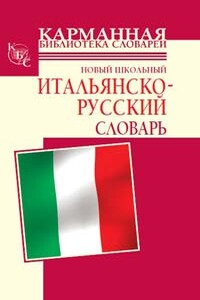
Словарь, созданный русскими и итальянскими специалистами, знакомит читателей с новыми словами, их различными значениями и оттенками, а также случаями употребления, которые можно активно использовать в повседневной жизни.Более 1000 слов и текстовых примеров, позволяющих раскрыть особенности синтаксиса современного итальянского языка.
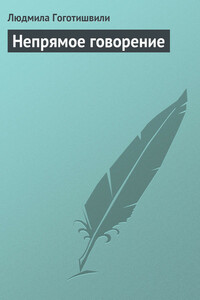
В книге изучается феномен непрямого выражения смысла в языке. Сопоставляются различные толкования этого явления в русском символизме, феноменологии, лингвистике, семантике, аналитической философии, структурализме, теориях референции, тропологии, нарратологии, деконструктивизме и др. Выявляются и анализируются разнообразные конкретные способы непрямого выражения смысла: расщепленная, отсроченная, непрямая референция; двуголосие, полифония, антиномические конструкции; расшатывание акта именования, символ и метафора; ингенциональные и аттенциональные сцепления, модальные и тональные сдвиги; смещения и наслоения фокусов внимания, расщепление «я» говорящего на частные «голоса», их попеременные смены, чередования и наложения; саморедукция авторского голоса и ее степени, стадия инсценированной «смерти автора» и т.
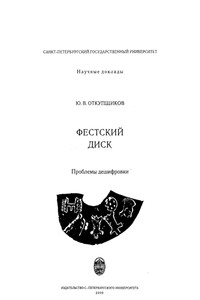
Данная публикация посвящена трудному и запутанному вопросу по дешифровке таинственного памятника древней письменности — глиняного диска, покрытого с обеих сторон надписью из штампованных фигурок, расположенных по спирали. Диск был найден в 1908 г. на Крите при раскопках на месте древнего Феста. Было предпринято большое количество «чтений» этого памятника, но ни одно из них до сих пор не принято в науке, хотя литература по этому вопросу необозрима.Для специалистов по истории древнего мира, по дешифровке древних письменностей и для всех интересующихся проблемами дешифровки памятников письменности.
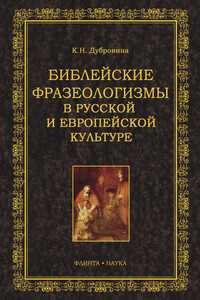
Книга представляет собой научный труд в популярном, доступном изложении. В ней рассказывается о библейских фразеологизмах (образных выражениях, пословицах, поговорках, афоризмах, крылатых изречениях) и библеизмах – словах в русском и других европейских языках, а также об отражении библейских образов, сюжетов, идей, правовых и морально – этических норм и воззрений древнего Востока в культуре народов, исповедующих христианскую религию. Особое внимание уделяется русской национальной культуре: использованию библейских слов и выражений в русском языке, в художественной и публицистической литературе, в изобразительном и музыкальном искусстве.Для гуманитариев разных специализаций: филологов, историков, культурологов, искусствоведов, школьных учителей, преподающих основы христианской (православной) культуры, а также для самого широкого круга читателей, интересующихся историей русского языка и культурой русского и европейских народов.Книга создана на кафедре общего и русского языкознания филологического факультета Российского университета дружбы народов (РУДН) при поддержке Российского государственного научного фонда (РГНФ).
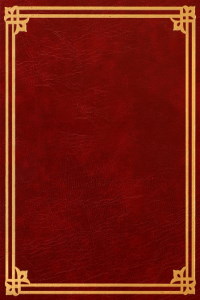
В книге рассказывается история главного героя, который сталкивается с различными проблемами и препятствиями на протяжении всего своего путешествия. По пути он встречает множество второстепенных персонажей, которые играют важные роли в истории. Благодаря опыту главного героя книга исследует такие темы, как любовь, потеря, надежда и стойкость. По мере того, как главный герой преодолевает свои трудности, он усваивает ценные уроки жизни и растет как личность.